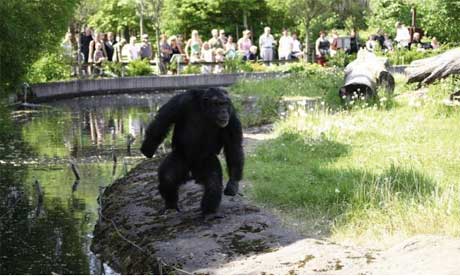
Shut off your computer and go outside. It's a beautiful day.
Updates on shows, projects, and the rantings of a crazy person




| By Diene Petterle |
It was one of the thorniest questions of the 20th Century and it remains a conundrum today. Are all "ordinary" people potentially violent?
The human race is both appalled and fascinated by violence. Man's aggression spans the globe - from terrorist attacks to guerrilla wars to gang-related crime.
It is everywhere, and it binds all nations and races together. But where does it begin? Do we learn it or is it something instinctive?
Most of us think of ourselves as calm and peaceful people.
We're brought up to try and resolve all conflict peaceably and tend to think that violence is something that "other" people commit, not ourselves. But is it?
Is it possible that you, or your mother or daughter or son, could ever be driven to commit a dreadful crime? Do we have that level of violence in ourselves?
The answer is yes.
Contrary to popular belief, we are born violent. Until the age of three, our impulses run riot. There is no stopping the urges which come from the emotional centre in our brains.
But as we grow up, we start to develop the part of the brain that allows us to control our aggression - the pre-frontal cortex. Yet crucially, how well this control mechanism works depends on our experiences.
Festival of violence
Being taught to share and take turns rather than resolve conflict with violence actually changes the physical structure of the brain and therefore makes us less aggressive.
But trying to resolve conflict peaceably is not something all cultures subscribe to. In the Bolivian Andes, one tribe settles disputes which arise over the year in an annual festival of violence, known as the Tinku.
 The way people with no history of violence committed atrocities during World War II has provoked much discussion |
Their warrior tradition dictates that men, women and even children should learn to fight and deaths are not unheard of.
Neuroscientist Maria Couppis argues that their brains are different from the norm because they were socialised to resolve conflicts this way.
This suggests that although we are all born with a violent potential, our upbringing and the environment play a key part in creating violence controls in our brain.
Not only are we born violent, we are also chemically programmed to love it. Inside the brain a pleasure-inducing chemical called dopamine is released when we fight.
Dopamine informs the brain that we're having a good time. But the problem doesn't stop there - the rush we get from dopamine can get us physically addicted to violence. The more we have it, the more we want it.
Primeval pleasure
Danny Brown, a former hooligan, knows better than most just how far one can go to get this "hit". He was sent to prison for stabbing a rival fan but even that didn't stop him. The rush of hooliganism was too strong to resist.
"I was never into drinking or drugs. Fighting was my heroin."
| Prof Charles Golden |
Fighting is a primeval pleasure controlled by the frontal part of the brain. But how easy is it for us to lose control? Crimes of passion are an everyday occurrence and perpetrators often don't know what came over them. How is this explained? What is it that drives them to lose it?
Neuro-psychology expert Prof Charles Golden says we can all easily lose control and commit an extreme act of violence. All we need is for there to be a breakdown in the pre-frontal cortex and that can be triggered by anything from a car accident or repeated blows to the head in a game of rugby.
In fact, physical injury is not the only way to cause the cortex to shut down. Depression, alcohol abuse, drugs, lack of sleep and even the natural ageing process can all injure our violence controls.
Control mechanisms
"One of my patients is a priest," says Prof Golden. "He spent all his life helping people and one day he had a car accident. In the hospital, the doctors sent him home saying he was completely fine.
"For a month he didn't notice anything was wrong. But then he had a fight with his wife and completely lost it. He very nearly killed her. So much so that she left him straight away.
 Many are forced into violent action and desensitised |
"The scary thing is that in your everyday life you just don't notice there's anything wrong. It's only when your violent impulses are triggered that you realise you are out of control. But by then it's probably too late."
It's hard to accept that we're born violent, that we enjoy it, and that all our control mechanisms can easily be broken.
But if we think about why most people get killed, it isn't because of a crime of passion or a sudden rush of violence - it is because of war and genocide. It is because someone deliberately decided to kill another person.
Emmanuel Jal, a former child soldier in the Sudan, has personal experience of how a traumatic experience can lead you to deliberately want to kill another human being.
He had a healthy and happy childhood until one day war tore his hopes for a normal life. His mother disappeared, his village was burnt down and he lost everything he had.
Justified aggression
He became convinced that the people who did this to him deserved to die, and joined the rebel army. With them, he killed and tortured many people.
He is now trying to re-build his life and share with the world the idea that violence only creates more violence.
Emmanuel Jal's experience is extreme. But how extreme does a situation need to be for you or I to be convinced that violence is justified against another person?
 Sometimes violence is explained by alcohol consumption or other factors |
Most of us can imagine that if someone harmed our children or loved ones, we might engage in violence. But could we ever harm someone who hasn't caused us any harm, merely because of an idea or ideology?
The much-cited Milgram experiment of 1961 suggests the answer might be yes. Members of the public were asked to give a shock to a "volunteer" every time they got an answer from a multiple questions test wrong. The shocks were to be increased incrementally, up until the lethal 450v shock.
What the participants didn't know was that the "volunteer" was acting and hadn't been receiving shocks. But still two-thirds were prepared to deliver the "fatal" 450v shock because of the supervision of a white-coated authority figure.
The experiment has often been used as the proof that we are all capable of violence within a certain framework. We struggle to accept this, but the science seems to suggest we are wrong.
http://news.bbc.co.uk/2/hi/uk_news/magazine/8043688.stm This article was first published on guardian.co.uk at 17.33 GMT on Monday 9 March 2009. It was last updated at 15.20 BST on Wednesday 15 April 2009.
This article was first published on guardian.co.uk at 17.33 GMT on Monday 9 March 2009. It was last updated at 15.20 BST on Wednesday 15 April 2009. Santino, a 31-year-old male at Furuvik zoo, may be the first animal to exhibit an unambiguous ability to plan for the future, a behaviour many scientists argue is unique to humans. Forward planning takes considerable cognitive skills, because it requires an animal to envisage future events it will have to deal with.
Santino would get agitated when the first groups of visitors arrived at his enclosure in the morning, and would start hurling stones at the spectators. When the zookeepers investigated, they found that, while the zoo was closed, Santino had been busy making piles of ammunition, and returned to them to resupply.
To catch the chimp in action, one zookeeper hid in a room overlooking the enclosure and observed the ape's behaviour before the zoo gates opened each morning. She saw Santino dragging stones from a protective moat that surrounded his island home, before placing them in piles. Further covert surveillance of the ape revealed he spent some time tapping areas of concrete floor with his fist. Occasionally, the animal would thump harder, releasing chunks of concrete that he broke into rough discs.
A survey of the enclosure showed that Santino made piles of ammunition only on the quarter of the island's shore that faced the visiting crowds.
Since becoming aware of the issue, zookeepers have removed hundreds of caches of stones from the island and have observed Santino gathering stones and putting them in piles at least 50 times. Santino's attempts to fashion concrete discs has been recorded 18 times, according to a report in Current Biology.
Staff at the zoo coped with Santino's antics by warning visitors when he was getting agitated, and erected a fence to try to contain the projectiles. Cognitive scientist Mathias Osvath, the author of the study, believes that such complex forward planning suggests Santino can anticipate future events and is able to devise ways of dealing with them. In this situation, he is trying to get the crowds to move on.
"Forward planning like this is supposed to be uniquely human; it implies a consciousness that is very special, that you can close your eyes you can see this inner world," he said. "Many apes throw objects, but the novelty with Santino is that he makes caches of these missiles while he is fully calm and only throws them much later on.
"We are not alone in the world within. There are other creatures who have this special consciousness that is said to be uniquely human."
Osvath interviewed zookeepers at Furuvik and examined records of the chimp's behaviour. He found that Santino only gathered rocks and made concrete missiles when the zoo was closed. He gave up the behaviour completely when the zoo was shut over the winter.
The zookeepers recently decided that an operation was the best way of controlling Santino's behaviour.
"They have castrated the poor guy. They hope that his hormone levels will decrease and that will make him less prone to throw stones. He's already getting fatter and he likes to play much more now than before. Being agitated isn't good for him," said Osvath.
So much for evolution. Turns out Bob Barker was just interested in keeping the animals from rising up against us.



" "The difference between a madman and a professional is that a pro does as well as he can within what he has set out to do and a madman does exceptionally well at what he can't help doing.” ― Charles Bukowski